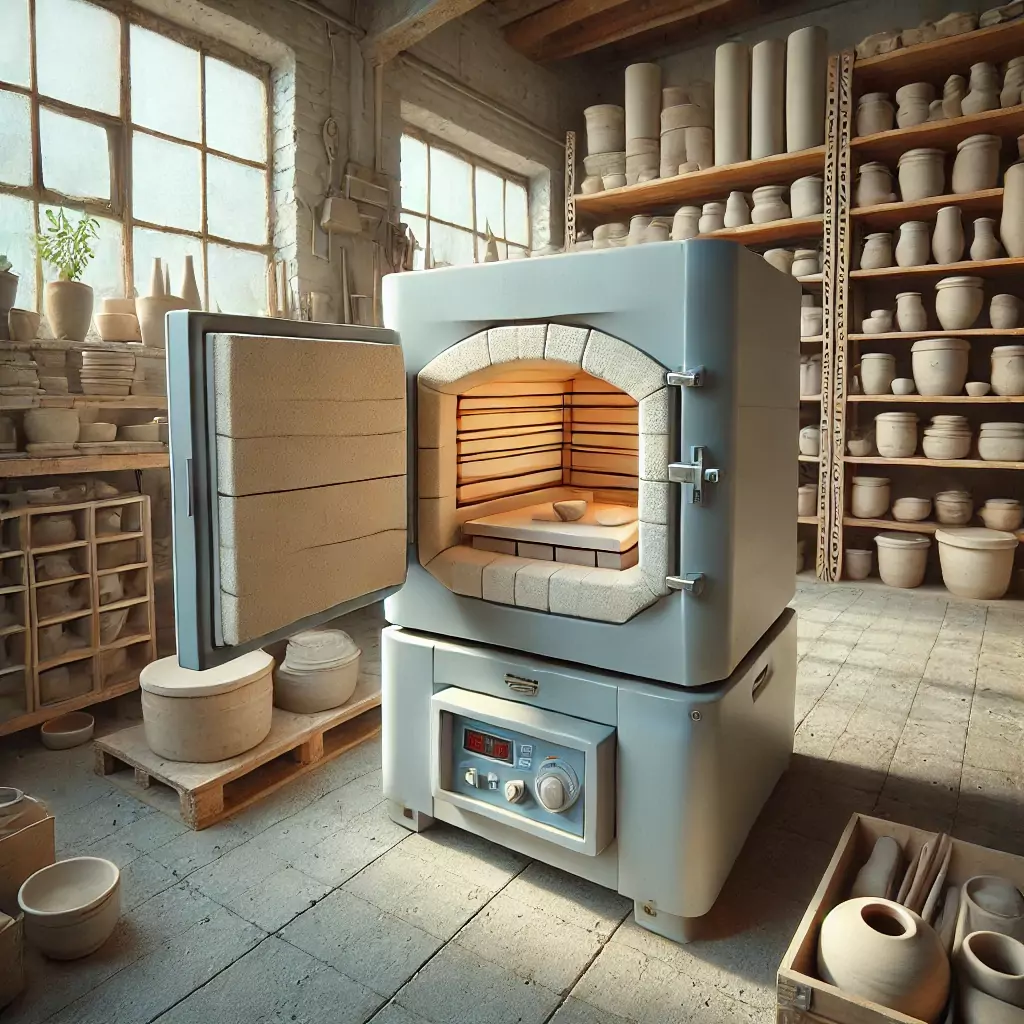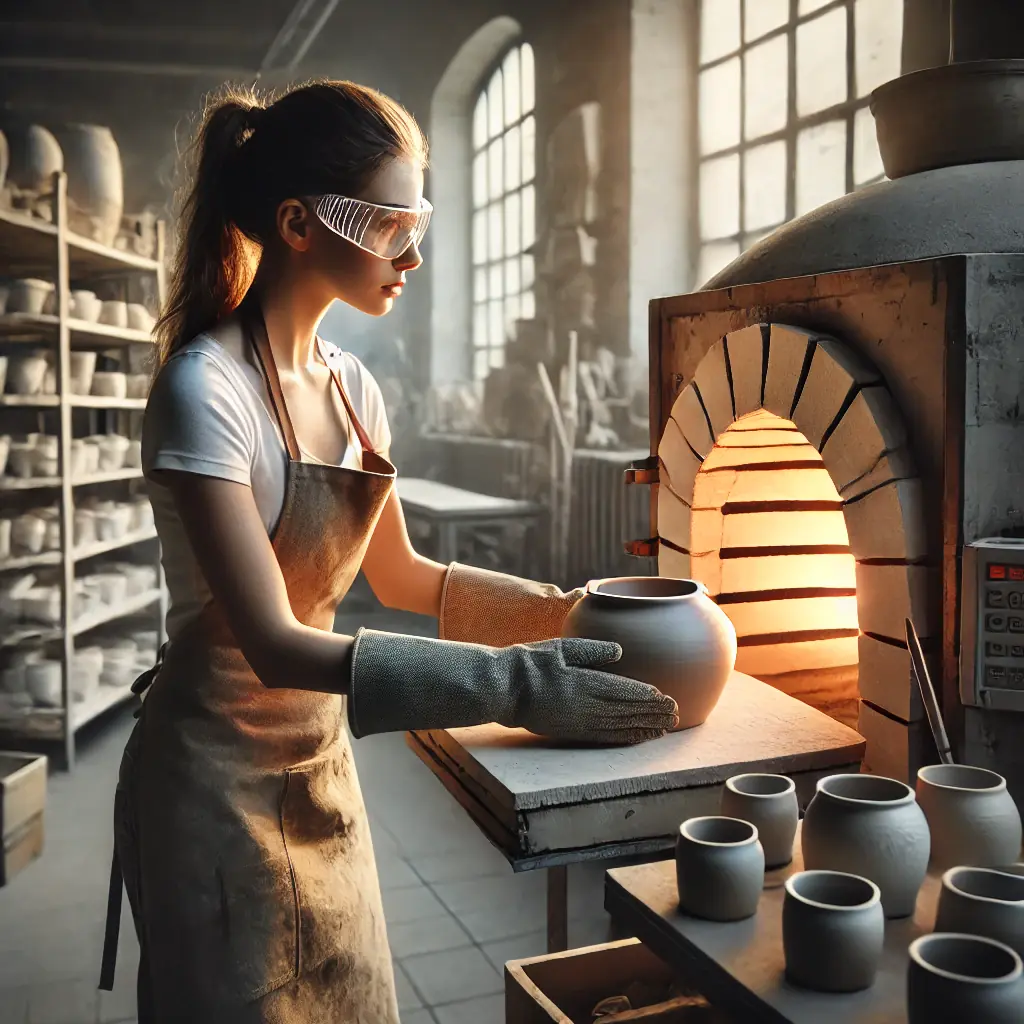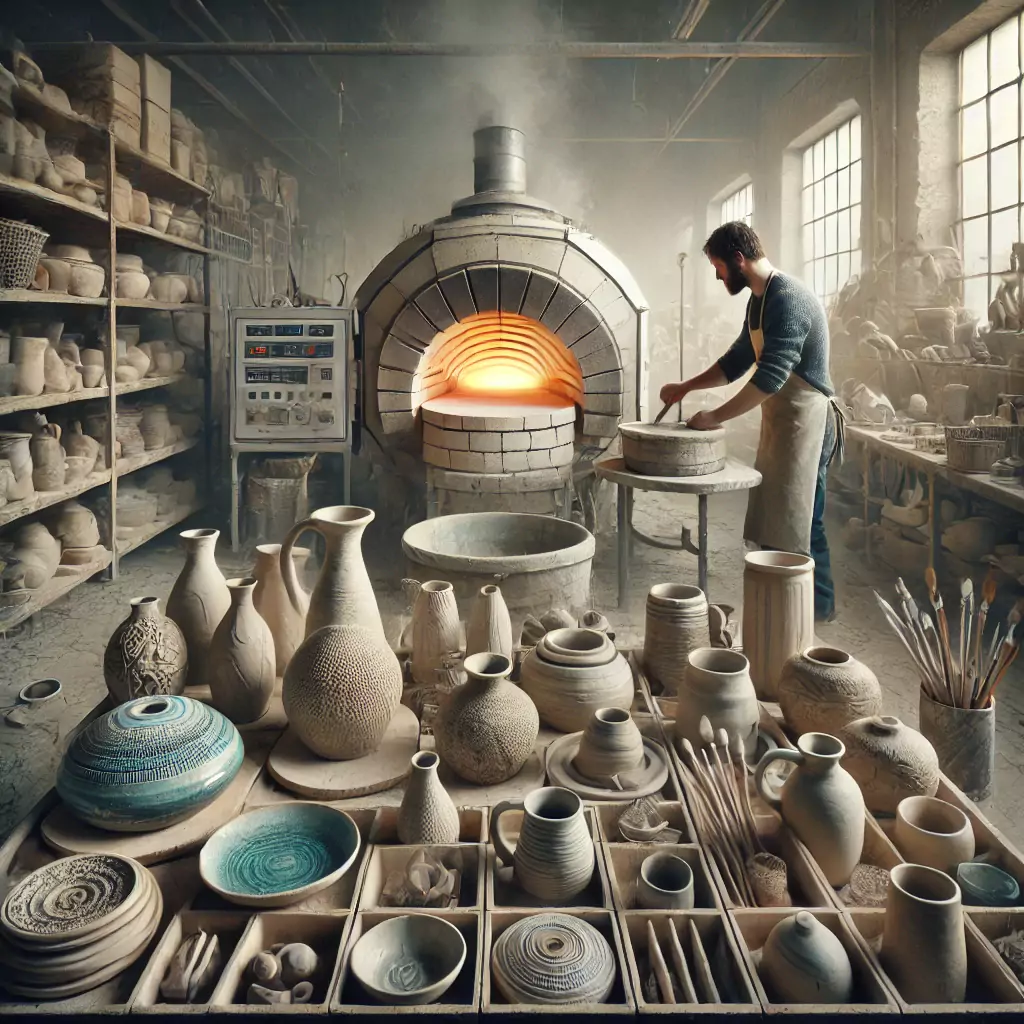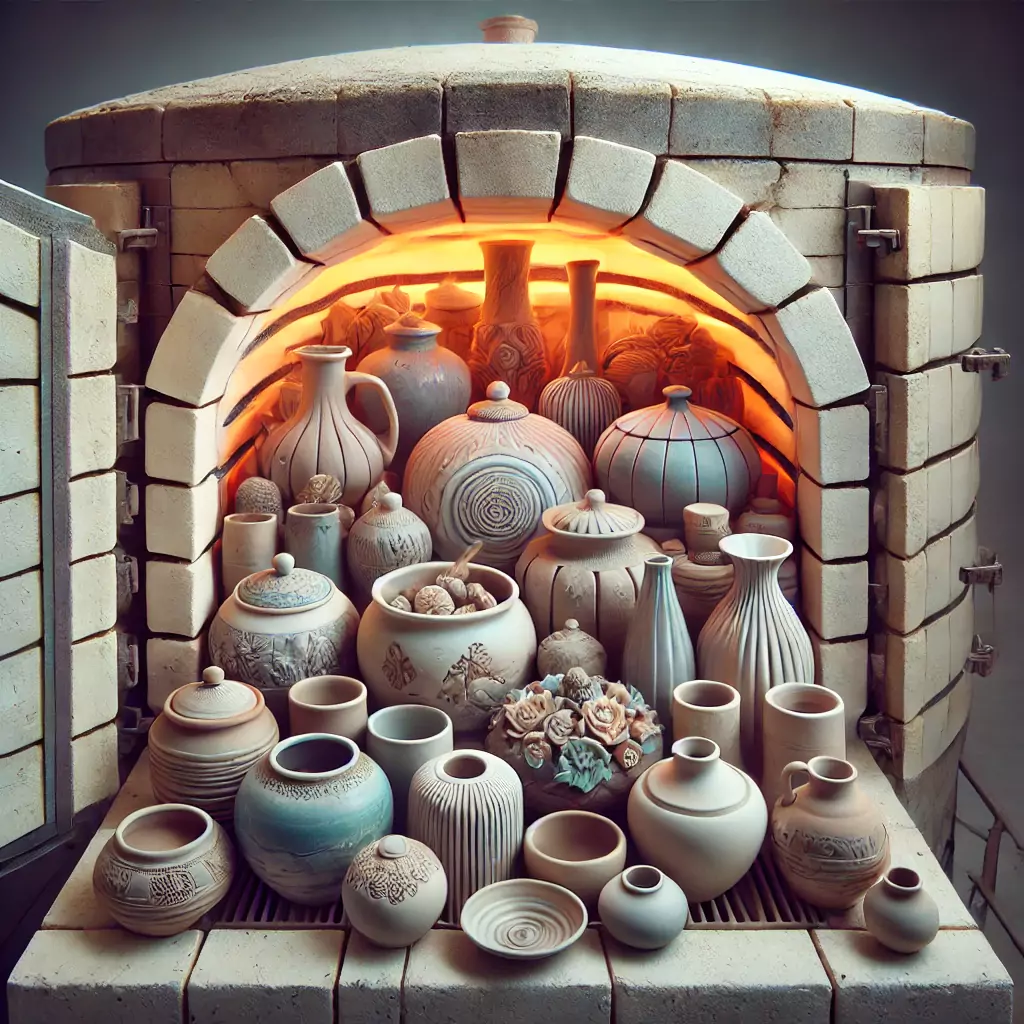Ceramic Kiln
Everything You Need to Know
Types of Ceramic Kilns: Which is Best for Your Studio?
Choosing the right ceramic kiln is a crucial decision for any ceramist or enthusiast aiming to elevate their work. There are several types of ceramic kilns, each with specific features suited to different needs, working styles, and production levels. Whether you’re seeking a kiln for a personal workshop or a professional studio, it’s essential to understand the differences between the main types available on the market.
Electric Ceramic Kiln
The electric ceramic kiln is a popular choice among ceramists, especially for those working in small studios or urban settings. This type of kiln operates on electricity and is known for its ease of use and temperature control. One of the main benefits of an electric ceramic kiln is its precision in controlling the firing process. Electric kilns often feature digital panels that allow for precise temperature adjustments and monitoring, making them ideal for pieces that require specific firing, such as porcelain or delicate glazes.
Additionally, electric kilns are generally more compact and require less space than other types of kilns, making them an excellent option for home studios or workshops where space is limited. Another positive aspect is that electric kilns do not produce smoke or emissions, meaning they don’t require complex ventilation systems as other kiln types do.
However, one factor to consider is energy consumption. Electric kilns can be costly in terms of energy, especially if used frequently for high-temperature firings. Despite this, they remain a popular option due to their ease of use and versatility.

Gas Ceramic Kiln
The gas ceramic kiln is another common option, especially in larger studios or for ceramists seeking greater flexibility in controlling the firing atmosphere. Unlike electric kilns, gas kilns operate with natural gas or propane, allowing them to reach very high temperatures more efficiently. Gas kilns are also ideal for firings that require a reduction atmosphere, which is essential for certain glazes and techniques that rely on the interaction of fire and gases with the ceramic.
Gas kilns are usually larger than electric ones and can handle bigger production batches, making them ideal for ceramists who produce large quantities of pieces or need repeated firings throughout the day.
However, one challenge of using a gas ceramic kiln is that it requires more experience and knowledge to operate safely and effectively. Temperature and atmosphere control is more manual, and proper ventilation is necessary to remove gas emissions.
While gas kilns can be more expensive to install due to the need for a gas line and ventilation, they can be more economical in the long term in terms of operational costs, especially if used frequently for high-temperature firings.
Wood-Fired Ceramic Kiln
The wood-fired ceramic kiln is the most traditional option, offering a unique experience for ceramists who seek a more artisanal approach in their work. These kilns run on wood and are known for their ability to create pieces with a unique finish due to the interaction between flames, smoke, and the ceramic pieces. Firing in a wood kiln can result in unexpected textures and colours that cannot be achieved with other types of kilns.
Using a wood-fired kiln requires a high level of skill and patience. The firing process can last several days, during which it is necessary to tend the fire and manually adjust the temperature. This makes wood kilns more suitable for experienced ceramists or those looking to create unique pieces that reflect the artisanal process.
Additionally, wood kilns are typically large and require an outdoor space, as well as a constant supply of wood. Despite the logistical challenges, many ceramists appreciate the process and the distinctive results that only a wood-fired kiln can offer.
How to Use a Ceramic Kiln Safely and Efficiently?
Using a ceramic kiln safely and efficiently is essential to ensure both the quality of the fired pieces and the safety of the ceramist and the workspace. The firing process involves extremely high temperatures, so following specific protocols and precautions is crucial. To start, make sure the kiln is in perfect condition. This includes checking the wiring in electric kilns, gas connections in gas kilns, and ensuring that doors or lids close properly. Regular maintenance can prevent operational issues and ensure that the kiln is ready for use without complications.
The kiln should be placed in a suitable area with ample space around it for proper ventilation and easy access. Avoid positioning it near flammable materials or in enclosed spaces without ventilation, as the high temperatures can pose hazards. It’s also advisable to have smoke detectors and fire extinguishers nearby in case of emergencies. When loading the kiln, place pieces carefully, ensuring they do not touch each other or the kiln walls. It’s essential to leave enough space for heat to circulate evenly, preventing hot or cold spots that could affect the firing results.
Never overload the kiln, as respecting its capacity is key to achieving consistent results and avoiding damage to both the pieces and the equipment. The use of kiln-specific supports, shelves, and spacers is also recommended to keep the pieces secure during firing.
During firing, regular monitoring of the kiln is important. This is particularly crucial for gas or wood-fired kilns, where temperature and internal atmosphere control require constant attention. In electric kilns, digital controls allow for precise programming of temperature and firing time, but it’s still advisable to check the process to ensure everything is working correctly.
Use a pyrometer to measure the temperature inside the kiln and follow the manufacturer’s recommendations for the appropriate temperatures for each type of ceramic or glaze. Avoid opening the kiln door during firing, as this can lead to a heat loss that disrupts the process and may damage the pieces.

Cooling is a crucial part of the firing process and must be done slowly and in a controlled manner. Once the kiln has completed the firing, turn it off and allow it to cool naturally before opening the door. Opening it too soon can cause thermal shock to the pieces, potentially leading to cracks or breakage. This gradual cooling is also important to preserve the kiln’s integrity, as sudden temperature changes can damage the heating elements and other internal parts, reducing its lifespan. Always wait until the kiln has reached a safe temperature before removing the pieces to avoid burns.
Regular maintenance of the kiln is key to ensuring its long-term safety and efficiency. Clean the interior after each firing to remove any glaze or clay residues that may have come loose, which will help prevent buildup that could impact the kiln’s performance or damage pieces in future firings. Periodically inspect the heating elements, gas connections, and other essential components of the kiln. If you notice any issues, such as inconsistent temperatures or longer firing times than usual, consult the manufacturer’s manual or contact a specialised technician to make necessary repairs.
Maintenance and Cleaning of the Ceramic Kiln: Tips to Extend Its Lifespan
The ceramic kiln is an essential tool in any pottery workshop, and proper maintenance is key to ensuring a long lifespan and optimal performance. Constant use can wear down a kiln’s components, and without adequate upkeep, this can affect both the quality of the pieces and the safety of the workspace. Regular cleaning is one of the most important aspects of prolonging your ceramic kiln’s lifespan. After each firing, it’s essential to clean any clay, glaze, or dust residue that may have accumulated inside the kiln.
These residues can impact the kiln’s performance and damage future pieces during firing. Use a soft brush or a vacuum designed for workshop use, and avoid abrasive cleaning products that could harm the kiln surfaces or heating elements. In electric kilns, the area around the heating elements should be cleaned with particular care to prevent operational issues or short circuits. In gas kilns, it’s important to regularly check and clean the burners to ensure a steady gas flow and prevent blockages that could affect firing.
Performing periodic inspections of your ceramic kiln is essential to detect issues before they escalate into major problems. Check the heating elements in electric kilns to ensure they are not worn or damaged. If you notice the kiln takes longer than usual to reach the desired temperatures, it may be a sign that the elements need replacing. In gas kilns, ensure that connections are in good condition and that there are no leaks. Visually inspect the gas lines and burners for signs of wear, and if you find any issues, contact a specialised technician to carry out necessary repairs. It’s also important to check the kiln door seal to ensure it remains intact. A damaged seal can lead to heat leakage during firing, reducing the kiln’s efficiency and affecting the quality of the pieces.

Preventive maintenance is key to extending the lifespan of your ceramic kiln. In addition to regular inspections, it’s recommended to perform an annual preventive maintenance check with the help of a specialised technician. This may include thermostat calibration, electrical circuit inspections, and replacement of worn parts.
For gas kilns, a deep cleaning of the burners and gas lines at least once a year can prevent residue buildup that affects kiln performance. This type of preventive maintenance will help avoid major issues in the future and ensure your kiln continues to function efficiently.
To maximise your ceramic kiln’s lifespan, it’s important to avoid overheating and overloading. Always respect the maximum load capacity recommended by the manufacturer, and avoid overfilling the kiln with pieces that touch each other or the walls. This will not only lead to better firing results but also reduce kiln wear. Additionally, avoid sudden temperature changes within the kiln, as thermal shock can damage the heating elements and walls. Allow the kiln to cool gradually after each firing before opening the door and removing the pieces.
If you don’t plan to use your ceramic kiln for an extended period, it’s important to store it properly to protect it from dust and moisture. Cover the kiln with a tarp or protective cover and ensure it is stored in a dry, well-ventilated area. Disconnect electric kilns from the power source and close gas valves on gas kilns. Regular maintenance and cleaning of your ceramic kiln are essential for ensuring its long-term durability and performance. By following these tips, you’ll extend your kiln’s lifespan, maintain a safe working environment, and guarantee the quality of your ceramic pieces with each firing.
Creative Ideas to Maximise the Use of Your Ceramic Kiln in Artistic Projects
The ceramic kiln is a powerful tool that allows artists to bring their creations to new dimensions. Beyond traditional firing, there are numerous ways to maximise the use of a kiln in artistic projects. Experimenting with different techniques and materials can open up creative possibilities, transforming ceramic pieces into true works of art. One way to make the most of the kiln is by exploring glazes and textured surfaces.
This process is not only essential for firing pieces but also for experimenting with glazes that change colour or texture depending on firing conditions. With reactive glazes, it’s possible to create surprising effects, such as crackled surfaces or metallic finishes. Playing with glaze combinations and firing temperatures allows for discovering new textures and visual effects on pieces. Textured surfaces can also be created before firing by using tools to carve, engrave, or apply raised decorative elements, highlighting details and adding depth to the artistic work.
Additionally, there are alternative firing techniques that can elevate projects to another level. Raku, for example, is a Japanese method that involves removing pieces from the kiln when they are red-hot and submerging them in a combustible material, like wood chips or paper, creating dramatic effects on the glaze.
Raku adds an artisanal and experimental touch to ceramics. Another interesting technique is soda or salt firing, in which sodium bicarbonate or salt is introduced during the firing process. The sodium reacts with the clay and glaze, forming a unique vitreous layer on the surface of the piece. This type of firing is ideal for those looking for a textured finish full of character on their ceramic pieces.
The ceramic kiln also offers opportunities to explore mixed-material projects. Incorporating metals, glass, or other materials that can withstand the firing process can add translucent and shiny elements to the pieces. When melted in the kiln, glass integrates with the ceramic, creating a striking visual contrast.
The inclusion of metals, such as copper wires or stainless steel rods, can generate interesting effects, as these materials oxidise and react with the ceramic during firing, leaving unique marks on the surface of the pieces.

Another way to maximise kiln use is by creating large installations or modular sculptures. This technique allows you to fire pieces in parts and then assemble them, which is especially useful for crafting large sculptures or ceramic murals that wouldn’t fit in the kiln as a single piece. This modular approach enables work on larger-scale projects, opening up possibilities for more complex and detailed creations that would be impossible to complete in a single firing.
Finally, the ceramic kiln can serve as a laboratory for artistic experimentation. You can try new clay combinations, such as mixing clays of different colours or properties to create unusual patterns. You can also experiment with unconventional objects to create molds for firing. For example, leaves, branches, or textiles can be used as temporary molds that burn away in the kiln, leaving unique textures and shapes in the fired clay.
Thank you for joining us on this creative journey to maximise the use of your ceramic kiln. By exploring new techniques, materials, and approaches, you can transform your projects into unique works full of character and originality. Don’t hesitate to experiment and take your creations to the next level! Continue exploring our blog and website at 1Aceramics.com for more ideas and inspiration for your artistic ceramic adventures.
